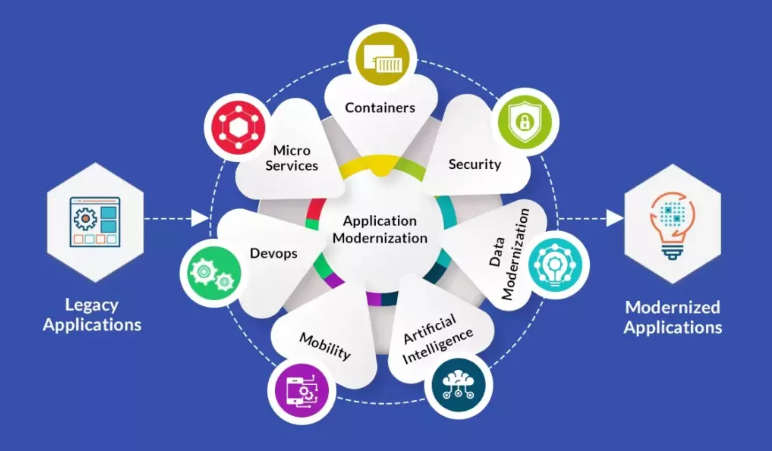
How to proceed with incremental modernization of legacy systems
Many industries rely on legacy systems, but outdated systems can hinder growth, efficiency, and security. With incremental modernization, organizations can upgrade their systems gradually without incurring high costs or risks associated with an entire overhaul.
Understanding Incremental Modernization
In incremental modernization, legacy systems are upgraded in small, manageable steps instead of being completely replaced. It reduces downtime, maintains productivity, and distributes the cost of modernization over time. It is particularly useful for complex systems that would be expensive and risky to overhaul completely. In legacy systems, technical debt is a problem caused by out-of-date code and architecture. Rather than removing existing systems, incremental modernization allows organizations to improve efficiency and enhance compatibility with modern technologies by refactoring parts of the system (Comella-Dorda et al. 2001).
Steps to Implement Incremental Modernization
A structured and systematic approach is required to implement incremental modernization. Key steps include:
- Assess the Current System: The first step is to identify outdated components and areas that need to be improved immediately. In this way, modernization tasks can be prioritized more effectively and resources can be allocated more efficiently (Comella-Dorda et al. 2001).
- Develop a Modernization Plan: Clearly define the objectives and timelines for each phase of the modernization process. The purpose of this is to measure progress and mitigate risks associated with large-scale changes (Ponnusamy and Eswararaj, 2023).
- Use AI Tools for Refactoring: With artificial intelligence tools, code analysis and optimization can be automated, resulting in a more efficient and faster refactoring process. In this way, developers can focus on strategic improvements rather than manual errors (Baumgartner et al., 2024). There are, however, limitations to AI-based refactoring tools. Especially in complex or poorly documented codebases, they may misinterpret context and introduce new bugs or reduce readability. In order to validate the suggestions and ensure the refactoring aligns with business logic and system requirements, human oversight remains essential.
- Involve Stakeholders Early: A smooth adoption is ensured when developers, managers, and users are engaged from the beginning. Stakeholders can gain a better understanding of incremental modernization through workshops and training sessions (Ponnusamy and Eswararaj, 2023).
- Adopt Zero Trust Security Measures: During the modernization process, it is crucial to strengthen security. Implementing a Zero Trust framework, which verifies all access requests, ensures the updated system is protected from potential threats (Freeman and Sheriffdeen, 2022).
- Document and Share Knowledge: A clear documentation of the modernization process prevents skill gaps and facilitates knowledge transfer. Moreover, it reduces the amount of dependency on individual expertise in the long run by ensuring long-term sustainability (Ponnusamy and Eswararaj, 2023).
Benefits of Incremental Modernization
An incremental modernization is more advantageous than a complete replacement of a system for several reasons. As a result, organizations are able to (Ponnusamy and Eswararaj, 2023):
- Implement changes gradually to minimize risks.
- Spread the investment over a longer period to reduce costs.
- Continuously improve components to increase system efficiency.
- Ensure that feedback and adjustments are available throughout the process
In this way, organizations can improve their systems without disrupting daily operations or risking critical failures.
Challenges and Solutions
In spite of its benefits, incremental modernization poses certain challenges. Stakeholder resistance, technical debt, and skill gaps can hinder progress. It is possible to address these challenges through (Ponnusamy and Eswararaj, 2023):
- Training and Upskilling: Supporting users and developers through ongoing education.
- Stakeholder Engagement: Maintaining transparency and collaboration.
- Continuous Integration and Deployment (CI/CD): Streamlining modernization efforts by implementing automated testing and deployment tools.
In order to ensure a smooth transition and greater acceptance of the modernized system, these issues need to be addressed properly.
Conclusion
Modernizing legacy systems incrementally is a realistic and effective approach. Companies can improve efficiency, reduce costs, and improve security without compromising system stability by breaking the process down into manageable steps and involving stakeholders throughout. In addition to addressing immediate concerns, this approach ensures sustainability and adaptability for the future.
Writer´s thesis in Theseus: https://urn.fi/URN:NBN:fi:amk-202504126301
References
- Baumgartner, N., Iyenghar, P., Schoemaker, T., & Pulvermüller, E. (2024). AI-Driven Refactoring: A Pipeline for Identifying and Correcting Data Clumps in Git Repositories. Electronics, 13(9), 1644. https://doi.org/10.3390/electronics13091644
- Comella-Dorda, S., Lewis, G. A., Place, P., Plakosh, D., & Seacord, R. C. (2001). Incremental Modernization of Legacy Systems. COTS-Based Systems, Technical Note CMU/SEI-2001-TN-006. Unlimited distribution subject to the copyright. Copyright 2001 by Carnegie Mellon University.
- Paul, F., & Sheriffdeen, K. (2022). From Legacy Systems to Zero Trust: Transitioning Your Organization’s Security Model.
- Ponnusamy, S., & Eswararaj, D. (2023). Navigating the Modernization of Legacy Applications and Data: Effective Strategies and Best Practices. Asian Journal of Research in Computer Science, 16(4), 239-256. https://doi.org/10.9734/ajrcos/2023/v16i4386